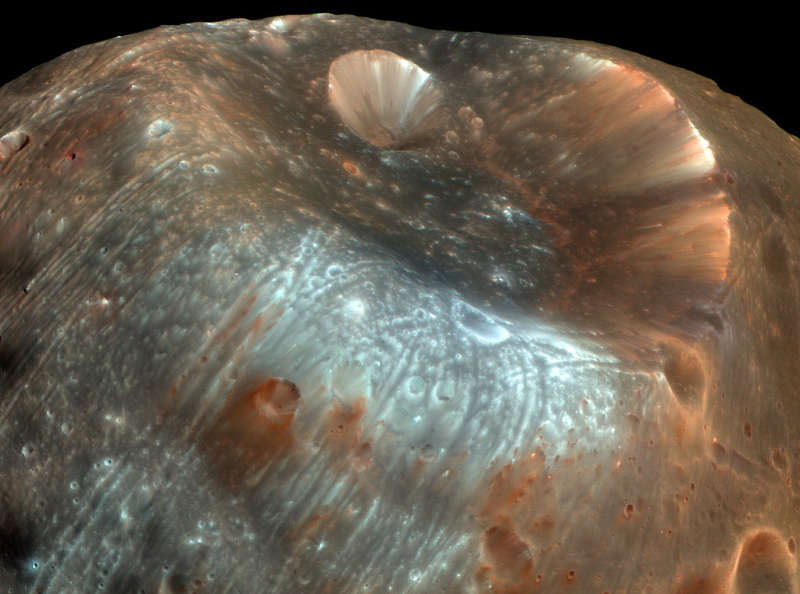Stickney Crater

Explanation:
Stickney Crater, the largest crater on the martian moon Phobos,
is named for
Chloe
Angeline Stickney Hall,
mathematician
and wife of astronomer Asaph Hall.
Asaph Hall discovered both the
Red Planet's moons in 1877.
Over 9 kilometers across, Stickney is nearly half the
diameter of Phobos itself, so large that the
impact that blasted out the crater likely came close
to shattering the tiny moon.
This
stunning,
enhanced-color image of Stickney and surroundings
was recorded by the HiRISE camera onboard the
Mars Reconnaissance Orbiter as it passed within some
six thousand kilometers
of Phobos in March of 2008.
Even though the surface gravity of
asteroid-like Phobos
is less than 1/1000th Earth's gravity, streaks suggest loose
material slid down inside the crater walls over time.
Light bluish regions near the crater's rim could indicate
a relatively freshly exposed surface.
The origin of the
curious grooves along the surface is
mysterious but may be related to
the
crater-forming impact.
Follow:
Mars
InSight Launch
Authors & editors:
Robert Nemiroff
(MTU) &
Jerry Bonnell
(USRA)
NASA Web Site Statements, Warnings,
and Disclaimers
NASA Official: Jay Norris.
Specific
rights apply.
A service of:
LHEA at
NASA /
GSFC
& Michigan Tech. U.

